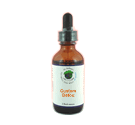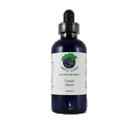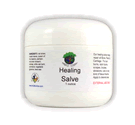 Arthropod/Vector
Bacteria
Chemicals
Fungus /Mold
/ Yeast Metals Parasites Virus Other Arthropod/Vector
Bacteria
Chemicals
Fungus /Mold
/ Yeast Metals Parasites Virus Other
|
Lice Detox Information
Body lice are not only a nuisance, they cause intense itching. They are also vectors (transmitters) of other diseases. Body lice can spread epidemic typhus, trench fever, and louse-borne relapsing fever. Louse-borne (epidemic) typhus is no longer widespread, but outbreaks of this disease still occur during times of war, civil unrest, natural or man-made disasters, and in prisons where people live together in unsanitary conditions. Louse-borne typhus still exists in places where climate, chronic poverty, social customs or war and social upheaval prevent regular changes and laundering of clothing. These are only the diseases that research has identified. Minimal research has been done to determine what other viruses and bacteria the louse may be transmitting. Body lice frequently lay their eggs on or near the seams of clothing. Body lice must feed on blood and usually only move to the skin to eat. The louse bites through the skin and injects saliva which prevents blood from clotting; it then sucks blood into its digestive tract. Bloodsucking may continue for a long period if the louse is not disturbed. While feeding, lice may excrete dark red feces onto the skin. Body lice exist worldwide and infest people of all races. Body lice infestations can spread rapidly under crowded living conditions where hygiene is poor (homeless, refugees, victims of war or natural disasters).
Delousing can usually be achieved by boiling all clothes and bedding, or washing them at a high temperature. A temperature of 130 °F or 54 °C for 5 minutes will kill most of the adults and prevent eggs from hatching. Leaving the clothes unwashed, but unworn for a full week, also results in the death of lice and eggs. Unlike Bed Bugs, Lice cannot live in carpet and furniture for more than a week. If you believe your house is infested, simply leaving your home for a week and cleaning your body before you come home will ensure freedom of Lice.
Some home remedies that have been used include cooking oil, mayonnaise, vinegar and other combinations. However, studies have shown lice can survive in hair covered with olive oil, mayonnaise and even petroleum jelly; even when it is left on the hair overnight. Shampooing with ordinary shampoo won't kill lice. Lice can survive through two consecutive shampooings, even when the hair is not rinsed for an hour after the second shampooing. Lice don't drown easily. Research has shown lice can survive when immersed in water for 14 hours at 86-98 degrees F. Natural food markets sell a Tea Tree based shampoo known to help cleanse the scalp of lice, but it is intended to be used synergistically with the combing. Red Cedar Oil is often used by the military as a safe, effective remedy for bed bugs, you can find this online and use as directed. Anise oil and ylang yland essential oils are reported to help. Our Lice Detox Remedy is not for the removal of lice, it is for detoxing the many issues that are caused by the louse bite. The remedy detoxifies lice saliva and the many toxins people put on lice bites which include pyrethrins, malathion, lindane shampoos, etc. Remember that our Liquid Detox is one of the most effective remedies for treating/healing bites and wounds. It is powerful at helping reduce pain, swelling and itching, and is very effective at preventing infection. You can apply it directly to the bite or wound or soak the absorbent part of a band aid (3-5 drops) in Liquid Detox and apply it to the bite or wound. |
|






